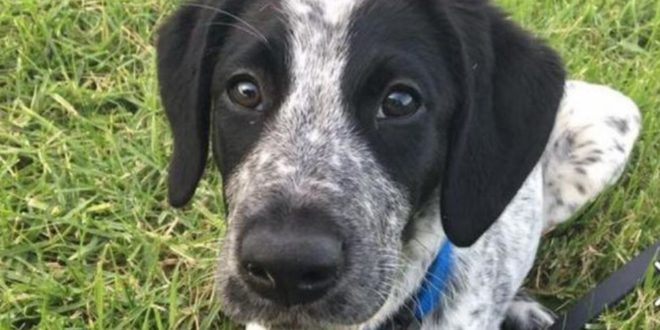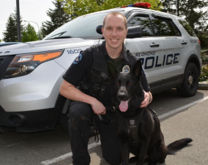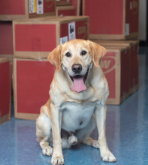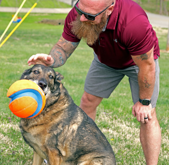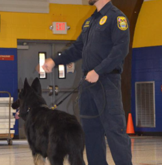Died – 3/17/17
Service dog shot and killed at Auckland Airport after delaying 16 morning flights
Auckland Airport staff say they had no option but to fatally shoot a dog on Friday morning. A runaway airport service dog, called Grizz, was shot on Friday morning after it delayed more than a dozen flights. The airport earlier said the dog had been caught but later confirmed it had been fatally shot. Members of the public questioned why the dog wasn’t knocked out with tranquilisers. “Surely the more humane thing if desperate would be to maybe tranquillise if really and truly necessary,” Renèe Scott said. However airport spokeswoman Lisa Mulitalo said the dog was only killed as a last resort. “They did everything they could, but unfortunately the dog had to be shot,” she said. “We’re really upset about it.” Mulitalo said the dog was not a stray, and had escaped from the aviation security team. Aviation security spokesman Mike Richards said the dog had been on the loose for around three hours. “At around 4.30am an Avsec security detector dog was spooked and got away from his handler,” he said. “The emergency operations centre was activated and a search was commenced.” Richards said 16 flights were delayed, as pilots would not risk passenger safety with a dog on the loose. He said airport staff eventually had to shoot the dog around 7.30am. “All efforts to capture the dog were exhausted and the airport company had no option but to use its experienced bird control marksman to shoot the dog,” he said. Richards referred further questions about details of the shooting to police, as they were involved in the decision to kill the dog. Police were yet to comment. Richards said those involved understood why the dog had to be killed. “The handler and Avsec are naturally upset but do understand there were no other options, in the very difficult circumstances,” he said. Andrea Midgen, the acting national chief executive for the SPCA, said the airport would only have shot the dog as a last resort. “I would say it’s one of those unfortunate accidents,” she said. “They put a huge investment in those dogs to do the job they do, and they treat them as part of the family.” Midgen said her thoughts were with aviation security staff as they had lost an important team member. “It would have been the hardest decision they’ve had to make.” Richards said the focus in coming days would be on understanding what had gone wrong. “Avsec will undertake a review of the incident to try and ascertain what spooked the dog, and if this has any implications for ongoing training,” he said. Avesc’s explosive detector dogs (EDD) have different jobs than the customs and MPI pups, tasked with sniffing out explosives rather than drugs or food. Each EDD has a human partner, or handler, and they work together to ensure no dangerous materials are present in our airports or on aircraft. They’re based in Auckland, Wellington, Christchurch and Queenstown. The job requirements for an EDD are to be happy, confident, sociable, non-aggressive and love playing with toys. Avesc doesn’t discriminate by breed. Dog teams undergo 10 weeks of training before graduating from the Police Dog Training Centre as operational. The dogs’ presence in airports can deter potential explosive-layers and they also conduct random searches around the airport, such as at check-in counters, screening points and gate lounges. They also back up police and customs and corrections teams when there are bomb threats. Mobile and quick, the dog teams are considered the most reliable and cost-effective way of detecting explosives.
